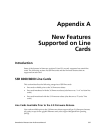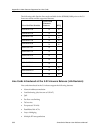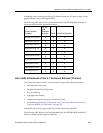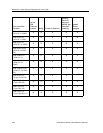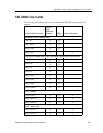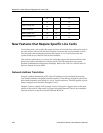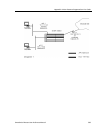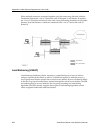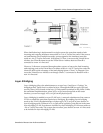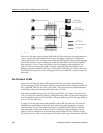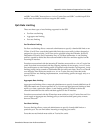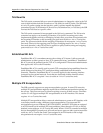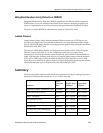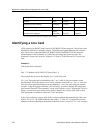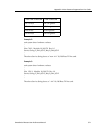
SmartSwitch Router User Reference Manual 367
Appendix A: New Features Supported on Line Cards
on SSR C since SSR C does not have a -AA or T-series line card. SSR C would drop all SNA
traffic since its module would not recognize SNA traffic.
QoS Rate Limiting
There are three types of rate limiting supported on the SSR:
• Per-flow rate limiting
• Aggregate rate limiting
• Port rate limiting
Per-Flow Rate Limiting
Per-flow rate limiting allows a network administrator to specify a bandwidth limit on an
IP flow. If an IP flow exceeds the bandwidth limit, the excess traffic is either dropped or
assigned to a lower priority. An IP flow can be specified using the IP header, Source IP,
Destination IP, Source Port, Destination Port, or ToS Byte information. A rate-limiting
profile is created to define the allowed bandwidth for this flow and then applied on the
incoming IP interface.
Ports that are associated with the incoming IP interface must reside on -AA or T-series line
cards. Ports that are associated with the outgoing interface do not require -AA or T-series
line cards because no rate-limiting profile is required on the interface. In Diagram 4, a rate-
limiting profile can be created to limit bandwidth for traffic sent from Client A to Client B
even though Client B does not reside on a -AA or T-series line card. Note that in the
current Per-flow rate limiting implementation, a rate-limiting profile can apply only on a
layer 3/4 flow.
Aggregate Rate Limiting
Aggregate rate limiting allows a network administrator to specify a bandwidth limit on all
flows that match one or more specified ACLs. You can use aggregate rate limiting to limit
traffic to or from a particular subnet. A rate-limiting profile is created to define the
allowed bandwidth for this traffic and then applied on the IP interface.
Ports that are associated with the IP interface must reside on a single T-series line card. You
cannot apply an aggregate rate limiting policy to an interface that spans ports on more
than one line card.
Port Rate Limiting
Port rate limiting allows a network administrator to specify a bandwidth limit on a
particular port. You can limit either incoming or outgoing port traffic.
Ports that are rate limited must reside on T-series line cards.



